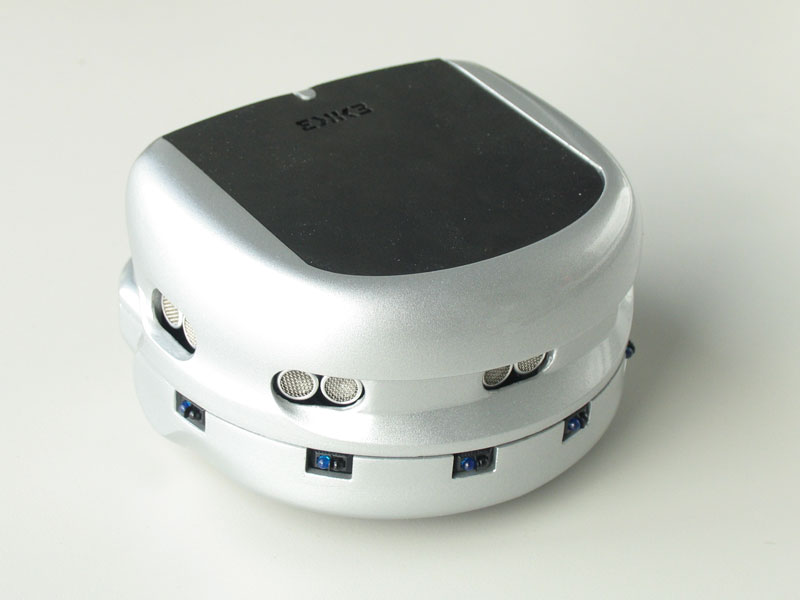
The Khepera III robot is produced by K-Team Corporation with development assistance from the Distributed Intelligent Systems and Algorithms Laboratory (DISAL). The robot has a diameter of 12 cm, making it appropriate for indoor multi-robot experimentation. Locomotion is accomplished via a differential drive system using two independent motors. The Khepera III uses the Korebot platform, running a standard embedded Linux operating system on an Intel XSCALE PXA-255 processor running at 400 MHz. A stackable expansion bus allows for the addition of custom robot modules. Belts of both ultrasonic and infrared proximity sensors surround the robot, allowing for detection of both close and medium range objects. The robot can be endowed with IEEE 802.11 wireless ability by using an appropriate card with the built-in CompactFlash slot.
DISAL is currently developing several extension modules for the Khepera III platform, including a sound detection board, a wind sensor board, an odor detection board, and a relative positioning module. These extensions will be used with the Khepera III robots in experiments for distributed robotic search and distributed odor source localization.
In addition, the Swarm-Intelligent Systems Group has developed a publicly available software toolbox for the Khepera III robot.
Team and Collaborators
Sponsors
EPFL, cosponsored in-kind by K-Team SA
Publications
Please note that the publication lists from Infoscience integrated into the EPFL website, lab or people pages are frozen following the launch of the new version of platform. The owners of these pages are invited to recreate their publication list from Infoscience. For any assistance, please consult the Infoscience help or contact support.